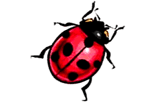|
General Procedures
1. Overview
2. Tools of Biological Science - Lab
3. Measuring - Lab
4. Determining how to observe
5. Modern Tools
Microscopes
1. History of Microscopes
2. How to Use
3. Observation - Lab
4. Slide Preparation
5. Importance of Microscopes
Cells
1. Function of Cell Parts
2. Comparison of Cells
3. Animal vs. Plant Cell - Lab
4. Types of Cells - Lab
5. Keeping Cells in Balance
Tissues
1. Different Tissues
2. Comparison of Tissues I - Lab
3. Comparison of Tissues II - Lab
4. How cells become tissues
5. Importance of Tissues
Organs
1. Who has organs?
2. Comparison of Organs - Plants - Lab
3. Comparison of Organs - Animals - Lab
4. Function of organs
5. How do cells and tissues become organs?
Tree of Life
1. What is classification?
2. Grouping Characteristics - Lab
3. Natural vs. Artificial Groups
4. Classification - Lab
5. Evolution of Groups
Bacteria
1. Archaea and Bacteria
2. Shapes of Bacteria - Lab
3. Where do viruses fit?
4. Good and Bad bacteria
5. Discovering these little cells
Protozoa
1. One cell organisms
2 Fresh water Protozoa
3. Comparing fresh water Protozoa - Lab
4. Marine Protozoa
5.. Comparing marine Protozoa - Lab
Fungi
1. Fungi Kingdom
2. Describing different Fungi - Lab
3. Parts of a Mushroom - Lab
4. Food from Mushrooms
5. Fungi Diseases
Plants
1. Defining Plants
2. Photosynthesis - Lab
3. Comparing land plants
4. Describing plants - Lab
5. Fresh and Marine water plants
Porifera
1. Body Plan
2. Comparing different sponges
3. Describing sponges - Lab
4. Comparing real and artificial sponges - Lab
5. Environments
Cnidaria
1. Body Plan
2. Hydra - Lab
3. Fresh and marine water
4. Comparing Corals - Lab
5. Coral Reefs
Annelids
1. Body Plan
2. Comparing Annelids (lab)
3.
Worms and Earth
4. Making Soil with Worms - Lab
5. Environments
Arthropods
1. Body Plan
2. Classification
3. Classification - Lab
4. Land versus Water Arthropods
5. Brine Shrimp - Lab
Mollusca
1. Body Plan
2. Body Parts - Lab
3. Classification
4. Classification - Lab
5. Environments
Echinoderms
1. Body Plan
2. Classification
3. Classification - Lab
4. Distinguishing Echinoderms - Lab
5. Environments
Fish
1. Classification
2. Parts of a Fish
3.
Fish Dissection - Lab
4. Fish Ecology
5. Importance of Fish
Amphibians
1. Classification
2. Parts of an Amphibian
3. Frog Classification
4. Frog Dissection - Lab
5. Environments
Reptiles
1. Classification
2. Parts of a Reptile
3. Comparing Snakes - Lab
4. Deadly Reptiles
5. Environments
Birds
1. Classification
2. Identification
3. Feathers - Lab
4. Egg - Lab
5. Environments
Mammals
1. Classification
2. Identification
3. Animals Tracks - Lab
4. Small mammals - Lab
5. Environments
Plants
1. Classification of Plants
2. Reproduction of Plants - Lab
3. Photosynthesis
4. Chlorophyll - Lab
5. Plant Growth - Lab
Soil
1. Components of Soil
2. Classification of Soil
3. Chemistry of Soil - Lab
4. What makes plants grow - Lab
5. Soil and Water
Ecological Adaptations
1. Ecology
2. Gastropods and Adaptive Strategies - Lab
3. Genetics
4. Changing one Gene - Lab
5. Is evolution occurring now?
Local Issues
1. Maps and biology
2. Mapping diversity - Lab
3. Determining Local Environments
4. Classifying local organisms - Lab
5. Biomes, Niches, and Habitats (field)
|
 Biological
Science
Biological
Science Biological
Science
Biological
Science